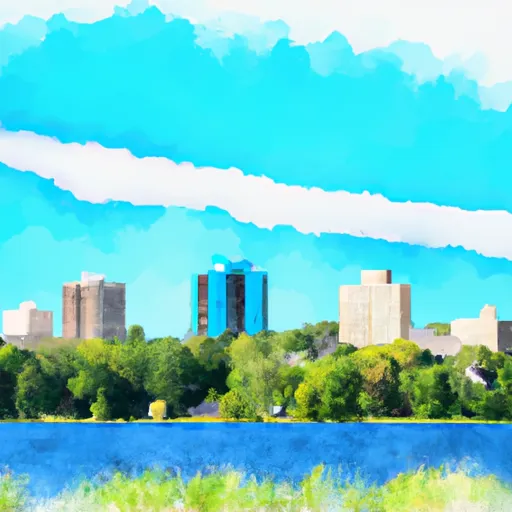-
 Snoflo Premium
Snoflo Premium
Get unlimited access to all our content
With no Ad interruptions! - Start Your Free Trial Login with existing account
Sturgeon-Lake
Eden Index
Climate
5.4
•
Recreation
3.6
•
Community
•
Safeguard
3.4/10

Sturgeon Lake is a small community located in Pine County, Minnesota. The town is named after the nearby Sturgeon Lake, which is one of the many lakes in the area. The climate in Sturgeon Lake is characterized by cold winters with heavy snowfall and moderate to warm summers. The average temperature ranges from the low 20s in winter to the mid-70s in summer.
Sturgeon Lake itself is a freshwater lake that covers approximately 1,620 acres. It is a popular destination for fishing enthusiasts as it is known for its diverse fish population, including bass, northern pike, and, as the name suggests, sturgeon. The lake is also suitable for boating and water sports.
The region around Sturgeon Lake is abundant in natural beauty, with lush forests, picturesque trails, and numerous wildlife viewing opportunities. Outdoor enthusiasts can explore the nearby General C. C. Andrews State Forest, which offers camping, hiking, and hunting activities. Additionally, the nearby Banning State Park provides opportunities for kayaking, canoeing, and fishing along the scenic Kettle River.
Overall, Sturgeon Lake, Minnesota provides a charming setting for outdoor enthusiasts to enjoy various recreational activities amidst its beautiful natural surroundings.
What is the Eden Index?
The Snoflo Eden Index serves as a comprehensive rating system for regions, evaluating their desirability through a holistic assessment of climate health, outdoor recreation opportunities, and natural disaster risk, acknowledging the profound impact of these factors on livability and well-being.
Climate Health Indicator (CHI): 5.4
Sturgeon-Lake receives approximately
756mm of rain per year,
with humidity levels near 82%
and air temperatures averaging around
5°C.
Sturgeon-Lake has a plant hardyness factor of
3, meaning
plants and agriculture in this region thrive during a short period during spring and early summer. Most
plants will die off during the colder winter months.
By considering the ideal temperature range, reliable water supplies, clean air, and stable seasonal rain or snowpacks, the Climate Health Indicator (CHI) underscores the significance of a healthy climate as the foundation for quality living.
A healthy climate is paramount for ensuring a high quality of life and livability in a region, fostering both physical well-being and environmental harmony. This can be characterized by ideal temperatures, reliable access to water supplies, clean air, and consistent seasonal rain or snowpacks.
Weather Forecast
Streamflow Conditions
St. Croix
Area Rivers
St. Croix
Snowpack Depths
St. Croix
Reservoir Storage Capacity
St. Croix
Groundwater Levels
Recreational Opportunity Index (ROI): 3.6
The Recreational Opportunity Index (ROI) recognizes the value of outdoor recreational options, such as parks, hiking trails, camping sites, and fishing spots, while acknowledging that climate plays a pivotal role in ensuring the comfort and consistency of these experiences.
Access to outdoor recreational opportunities, encompassing activities such as parks, hiking, camping, and fishing, is crucial for overall well-being, and the climate plays a pivotal role in enabling and enhancing these experiences, ensuring that individuals can engage in nature-based activities comfortably and consistently.
Camping Areas
| Campground | Campsites | Reservations | Toilets | Showers | Elevation |
|---|---|---|---|---|---|
| Moose Lake State Park | 35 | 1,115 ft | |||
| Stubler Beach | 8 | 1,511 ft | |||
| Barnum City Park | 12 | 1,089 ft | |||
| Willow River - Gen Andrews State Forest | 38 | 1,048 ft | |||
| Moose Lake City Park | 82 | 1,053 ft | |||
| Nelsons Landing - St. Croix National Scenic River | None | 868 ft | |||
| McCarthy Beach State Park | 90 | 1,393 ft | |||
| Buhl RV Park | 10 | 1,521 ft | |||
| Banning State Park | 35 | 1,118 ft | |||
| Aaron Provincial Park | 98 | 1,246 ft |
Nearby Fishing
Nearby Ski Areas
Catastrophe Safeguard Index (CSI):
The Catastrophe Safeguard Index (CSI) recognizes that natural disaster risk, encompassing floods, fires, hurricanes, and tornadoes, can drastically affect safety and the overall appeal of an area.
The level of natural disaster risk in a region significantly affects safety and the overall livability, with climate change amplifying these risks by potentially increasing the frequency and intensity of events like floods, fires, hurricanes, and tornadoes, thereby posing substantial challenges to community resilience and well-being.
Community Resilience Indicator (CRI):
The Community Resilience Indicator (CRI) recognizes that education, healthcare, and socioeconomics are crucial to the well-being of a region. The CRI acknowledges the profound impact of these elements on residents' overall quality of life. By evaluating educational resources, healthcare accessibility, and economic inclusivity, the index captures the essential aspects that contribute to a thriving community, fostering resident satisfaction, equity, and social cohesion.

